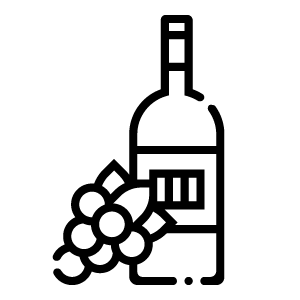Current Status: To be aged
The 2019 Bordeaux vintage appears to be excellent. Winter and early spring were dry and mild, leading to early budding. Spring frosts and hail caused minimal damage but reduced yields.
The summer was one of the hottest in Bordeaux's history. July brought extreme drought, especially affecting vines on sandy soils. Heavier clay soils retained more water, and grapes on them were rich in sugar. Late July rains brought relief to the vineyards.
Temperatures in August dropped, and the white harvest began at the end of the month. Light rains and cool September nights helped preserve acidity in the grapes. The risk of rot and disease was mostly averted.
Yields were mostly average. Estates on the Right Bank, especially those in Pomerol with soils ranging from sandy to clayey, provided particularly rich, concentrated fruit. Grapes from Left Bank appellations tended to reach phenolic ripeness more difficultly due to their typically more gravelly soil and free drainage. The consensus on the quality of the 2019 vintage points to a very good year. The wines have been described as having medium to high alcohol content, with sophisticated tannins and aromatic properties favoring elegance over raw power.
Various appellations on the Left Bank struggled with drought, and some Cabernet Sauvignon and Petit Verdot may exhibit green character. However, top wines from the Haut-Médoc, especially from Pauillac, Saint-Estèphe, Saint-Julien, and Margaux, have been well received, as have wines from Pessac-Léognan. On the Right Bank, wines tend to be intensely concentrated and rich in flavor. Merlot stands out as particularly generous and intense. Top appellations Pomerol and Saint-Émilion are shaping up to be very good.
The 2019 vintage appears to be very good. Dry white wines are striving to succeed, with refreshing, refined qualities.



